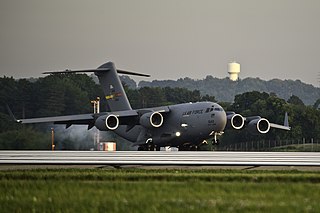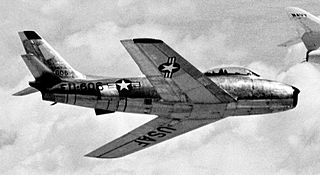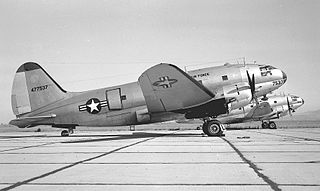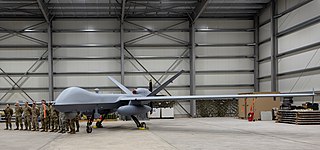
The 728th Airlift Squadron is a United States Air Force Reserve squadron, assigned to the 446th Operations Group, stationed at McChord Field, Joint Base Lewis-McChord, Washington. It is an associate unit of the active duty 8th Airlift Squadron of the 62d Airlift Wing.

The 729th Airlift Squadron is a United States Air Force Reserve squadron, assigned to the 452d Operations Group, stationed at March Air Reserve Base, California. It operates Boeing C-17 Globemaster III aircraft providing global airlift any time, any place.

The 730th Air Mobility Training Squadron is an Air Force reserve unit stationed at Altus Air Force Base, Oklahoma, where it trains airmen on Boeing C-17 Globemaster III, Boeing KC-135 Stratotanker and Boeing KC-46 Pegasus aircraft systems. It is assigned to the 507th Operations Group at Tinker Air Force Base, Oklahoma, but performs its training mission under the direction of the 97th Air Mobility Wing of Air Education and Training Command.

The 711th Special Operations Squadron is an active reserve squadron of the United States Air Force, part of the 919th Special Operations Wing at Duke Field, Florida. The unit is operationally gained by Air Force Special Operations Command if called to active duty.

The 446th Operations Group is a United States Air Force Reserve unit assigned to the 446th Airlift Wing. It is stationed at McChord Air Force Base, Washington.

The 448th Supply Chain Management Group is an inactive United States Air Force unit. Its last assignment was to the 448th Supply Chain Management Wing at Tinker Air Force Base, Texas, where it was inactivated on 30 June 2010.

The 715th Weapons Squadron is an inactive United States Air Force unit. It was last assigned to the USAF Weapons School at Whiteman Air Force Base, Missouri, where it served from 2003 until 9 September 2005 as an advanced training unit with the Northrop Grumman B-2 Spirit.

The 812th Fighter-Bomber Squadron is an inactive United States Air Force unit. Its last assignment was with 482d Fighter-Bomber Group stationed at Dobbins Air Force Base, Georgia.

The 813th Fighter-Bomber Squadron is an inactive United States Air Force unit. Its last assignment was with 482d Fighter-Bomber Group at Dobbins Air Force Base, Georgia.

The 814th Troop Carrier Squadron is an inactive United States Air Force unit. Its last assignment was with 482d Troop Carrier Group stationed at Miami International Airport, Florida.

The 612th Tactical Fighter Squadron is an inactive United States Air Force unit. It was last assigned to the 401st Tactical Fighter Wing at Torrejon Air Base, Spain, where it was inactivated on 1 October 1991.

The 713th Fighter-Bomber Squadron is an inactive United States Air Force unit. It was last assigned to the 448th Fighter-Bomber Group at Davis Field, Oklahoma, where it had been stationed since November 1955. It was inactivated on 16 November 1957.

The 712th Expeditionary Air Refueling Squadron is a provisional United States Air Force unit. In February 2001, the squadron was converted to provisional status and assigned to United States Air Forces Europe to activate or inactivate as needed. It was activated in 2008 for exercises with the Hungarian Air Force.

The 708th Bombardment Squadron is an inactive United States Air Force unit. It was last assigned to the 447th Bombardment Group at Castle Air Force Base, California, where it was inactivated on 16 June 1951.

The 456th Bombardment Squadron is one of the two predecessors of the 556th Tactical Air Support Squadron, an inactive United States Air Force unit. Formed in 1985 by the consolidation of the 456th with another inactive bombardment squadron. It has never been active under its most recent designation.

The 733rd Military Airlift Squadron is an inactive United States Air Force unit. It was activated as the 333rd Bombardment Squadron during World War II. After training in the United States, it deployed to the European Theater of Operations, where it participated in the strategic bombing campaign against Germany, earning a Distinguished Unit Citation. It was inactivated in England following V-E Day.

The 736th Bombardment Squadron is an inactive United States Air Force unit. It was last assigned to the 454th Bombardment Wing at Columbus Air Force Base, Mississippi, where it was inactivated on 2 July 1969 as the United States reduced its inventory of older Boeing B-52 Stratofortresses..

The 705th Tactical Airlift Training Squadron is an inactive United States Air Force unit. It was last assigned to the 924th Tactical Airlift Group at Ellington Air Force Base, Texas where it was inactivated on 30 June 1976, when reserve flying operations at Ellington ended.

The 731st Expeditionary Attack Squadron is a unit of the United States Air Force. It was activated on 4 March 2021 at the Romanian Air Force 71st Air Base in Câmpia Turzii. The unit is part of the 31st Operations Group and operates MQ-9 Reaper unmanned aerial vehicles.

The 323d Expeditionary Operations Group is a provisional United States Air Force unit assigned to the United States Air Forces in Europe. As a provisional unit, it may be activated or inactivated at any time.




















